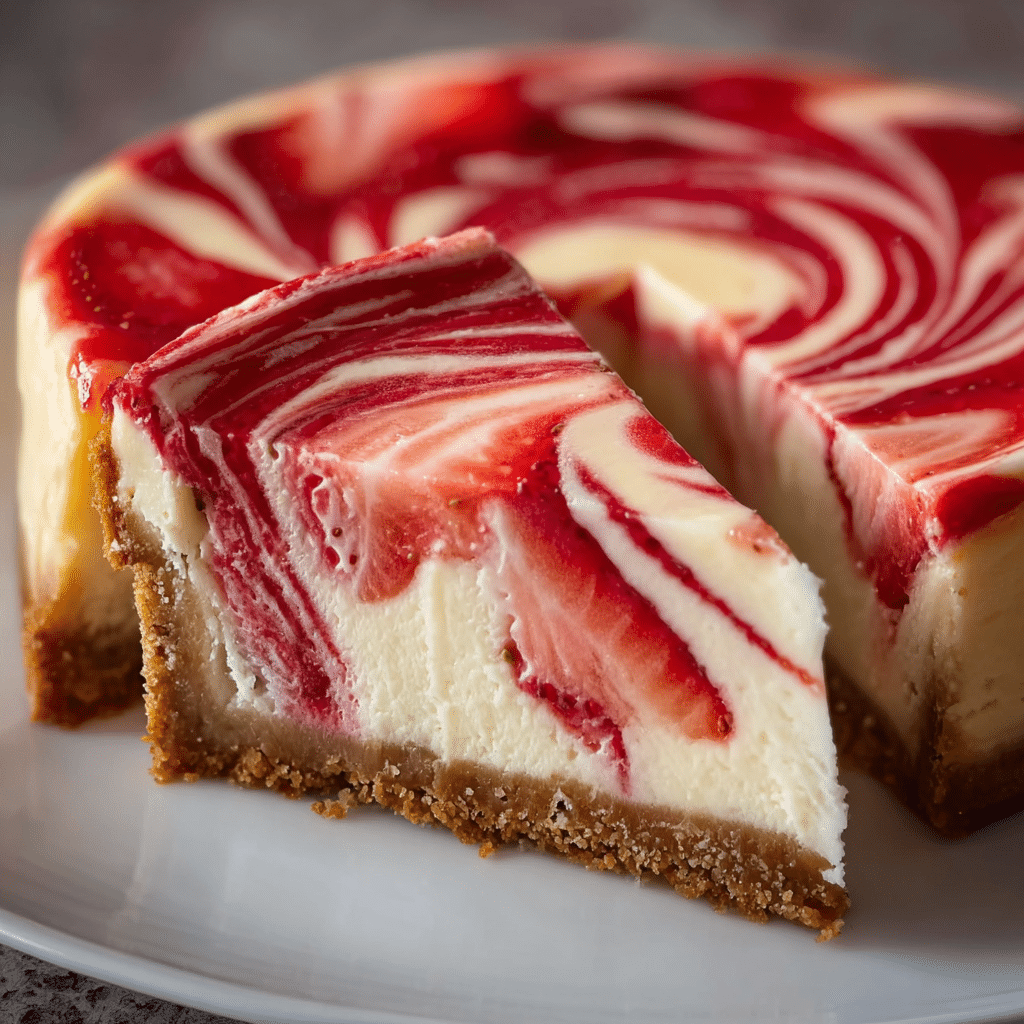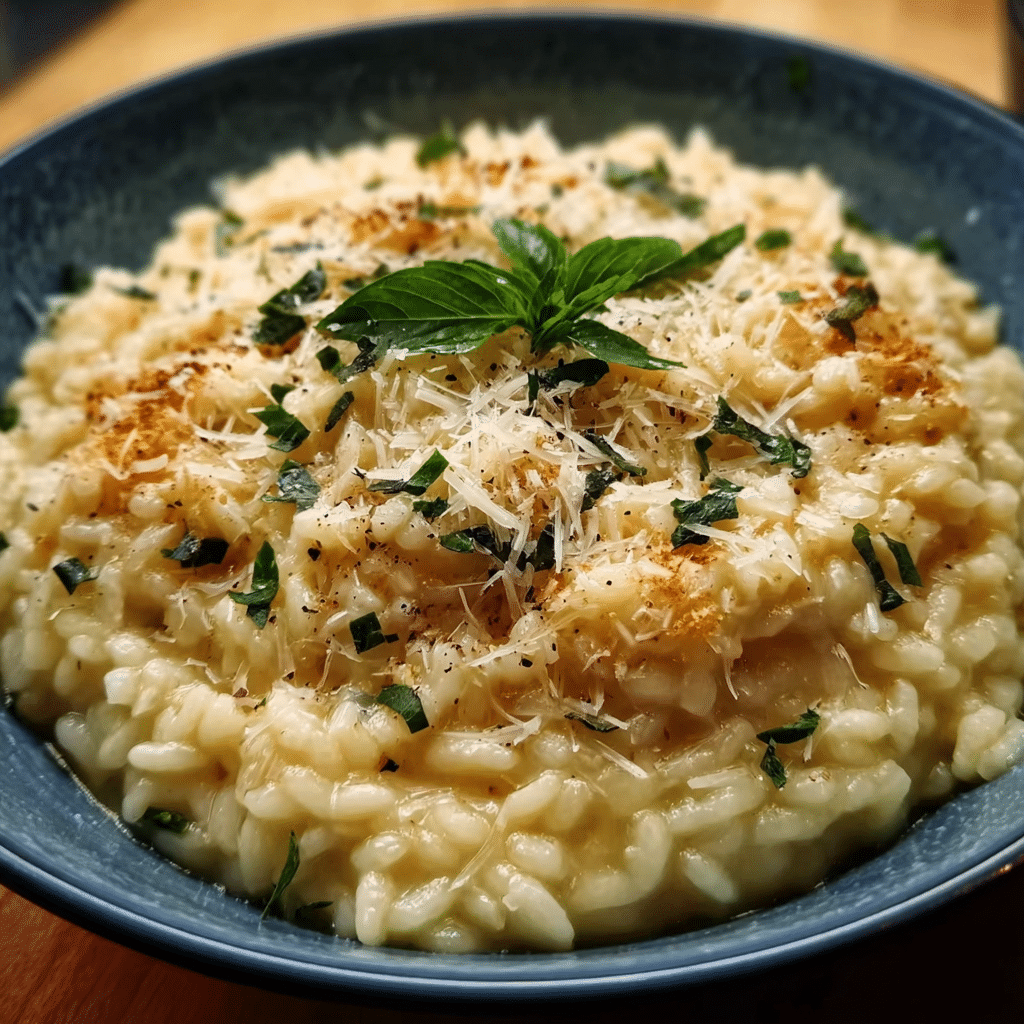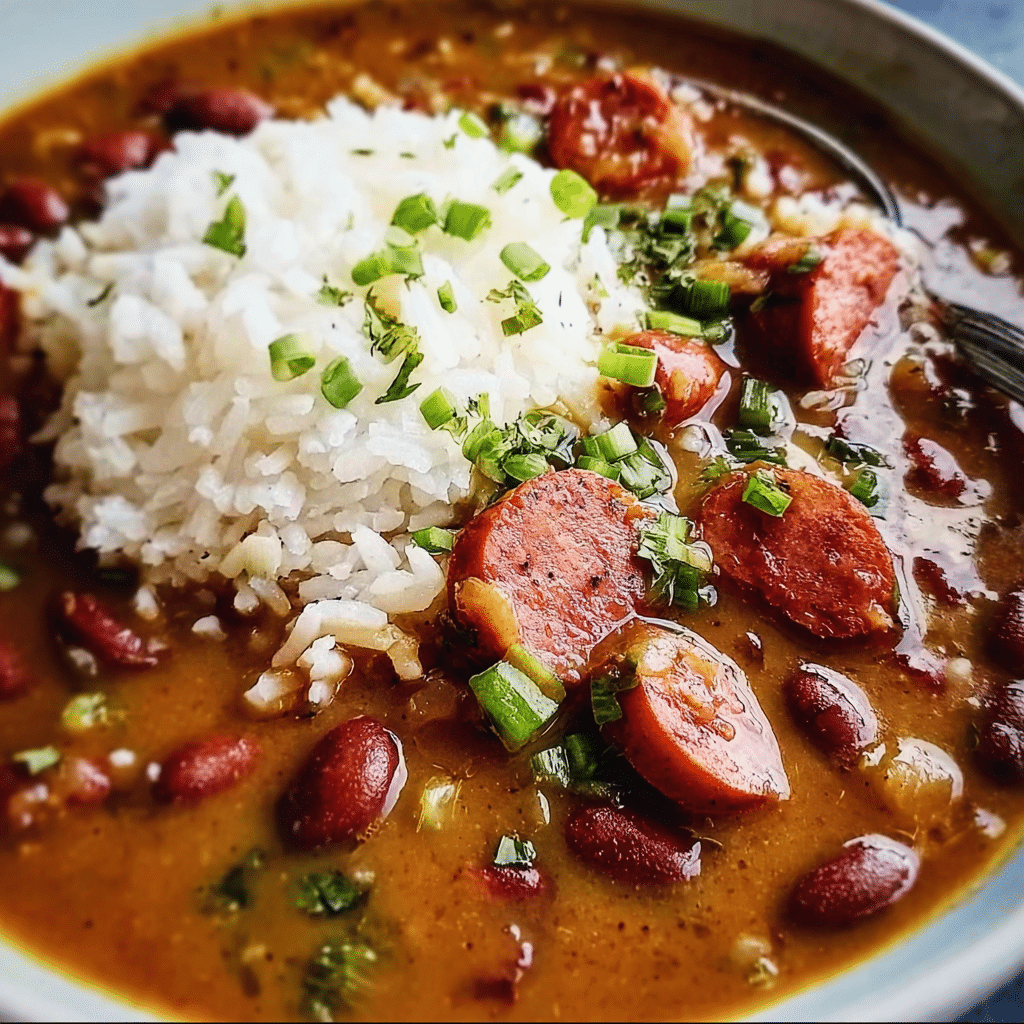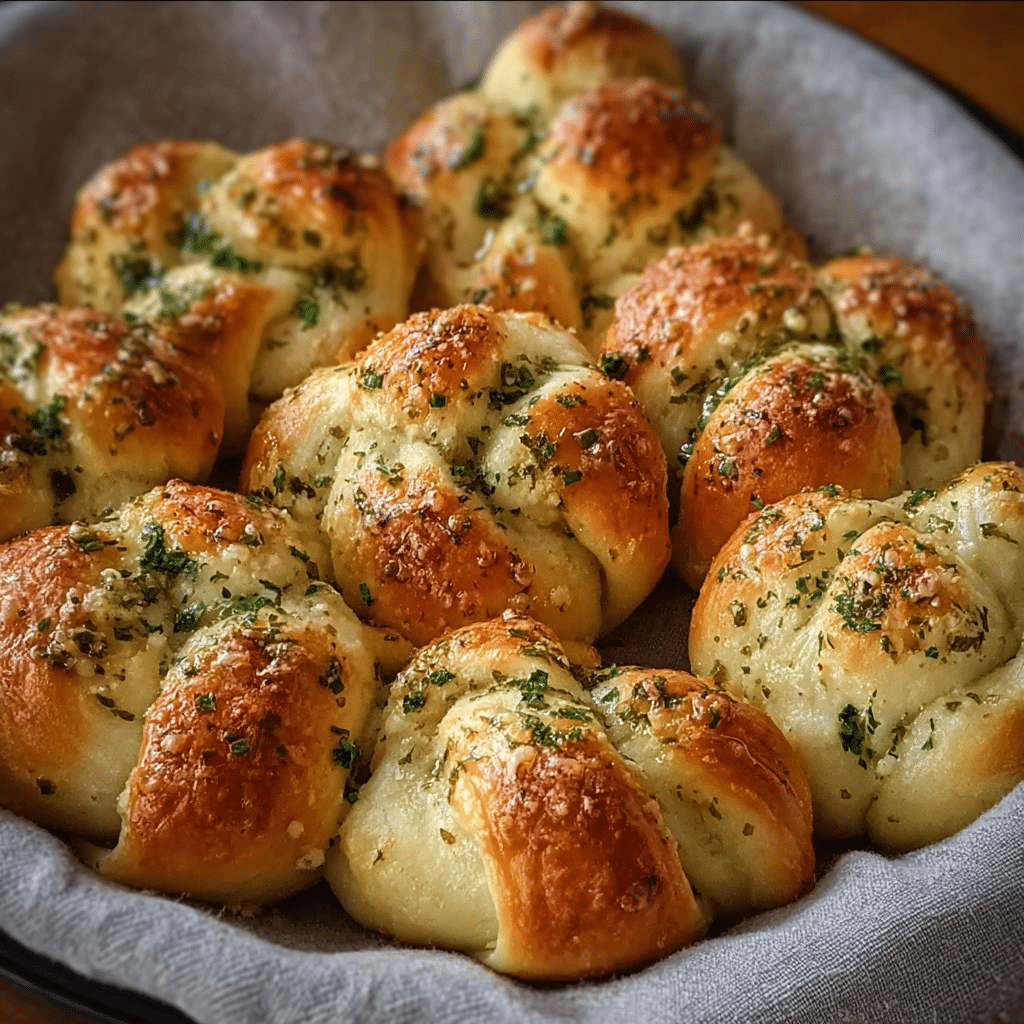Pumpkin bread recipe has a special place in my heart, and it all began one crisp autumn afternoon. The air was filled with the earthy scent of falling leaves, and I found myself in the kitchen, determined to embrace the seasonal harvest. My grandmother had recently gifted me her cherished recipe book, a treasure trove of handwritten notes and faded pages. As I flipped through the book, a particular recipe caught my eye—pumpkin bread. The memories of my grandmother’s warm, spiced loaves flooded back, and I couldn’t resist the urge to recreate that cozy feeling in my own kitchen.
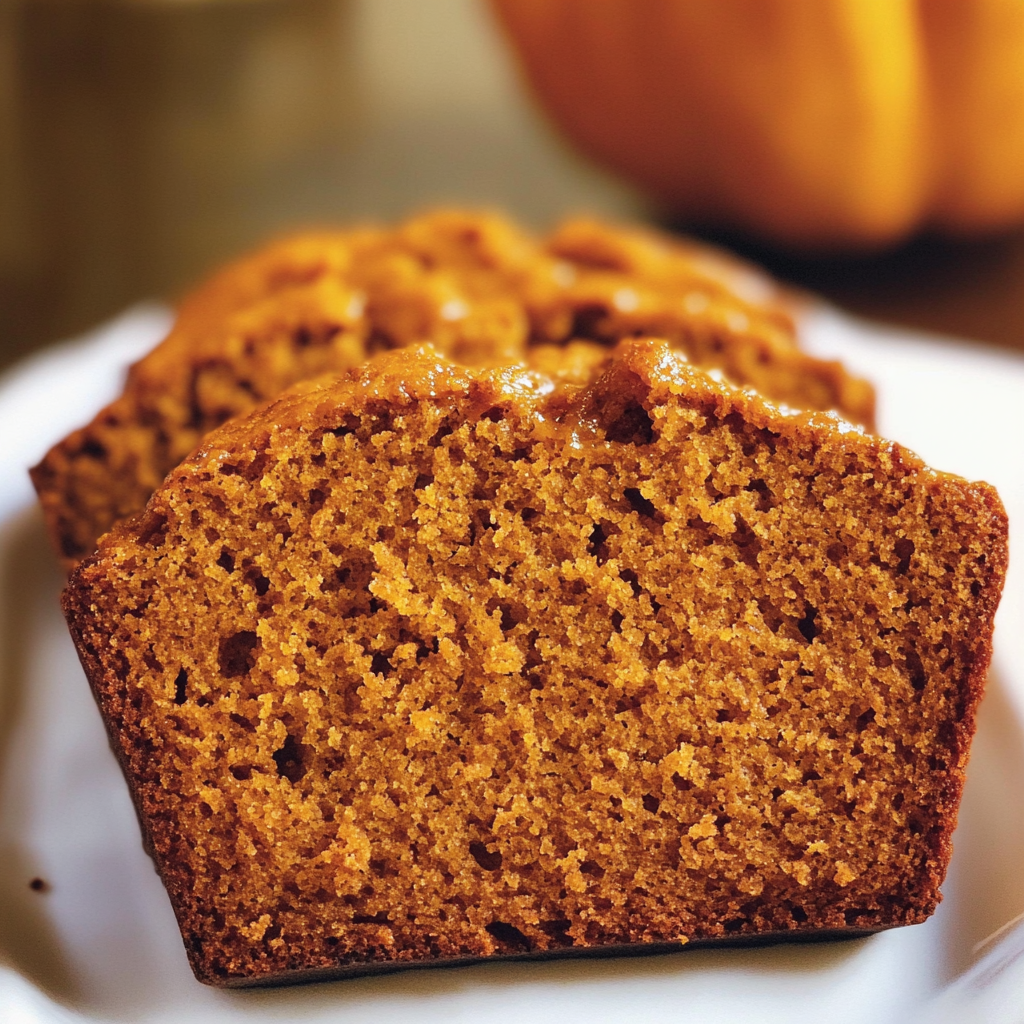
As I gathered the ingredients, I remembered the countless times I had baked alongside her during the fall. The laughter, the flour-dusted countertops, and the aroma of cinnamon and nutmeg filling the air were all part of our tradition. This pumpkin bread recipe was not just a dish; it was a vessel for memories, family, and love. The simple act of mixing the ingredients transported me back to those cherished moments, reminding me of the importance of family traditions and the joy of sharing food with loved ones.
The Story Behind This Recipe
Historically, pumpkin bread traces its roots to the early days of American settlers, who utilized pumpkins as a staple ingredient in their diets. They discovered that this vibrant squash could be transformed into a variety of dishes, including bread. The pumpkin bread recipe as we know it today began to emerge in the late 19th century, when baking powder and soda became widely available, allowing for lighter and fluffier loaves. Over the years, families across the country have adapted the recipe, adding their unique touches while keeping the essence of the dish intact.
What makes my pumpkin bread recipe stand out from others is its balance of flavors and the use of fresh pumpkin puree rather than canned. This small adjustment elevates the bread, giving it a richer flavor and a moist texture that will have your family coming back for seconds. It’s perfect for busy families seeking quick dinner solutions or a delightful snack during the hectic weekdays. The recipe is straightforward, requiring minimal prep time, which allows you to whip it up even on the most chaotic days.
This dish is not just a seasonal favorite but a versatile option that can be enjoyed throughout the year. While fall is the traditional time for pumpkin bread, there’s something heartwarming about savoring a slice in the middle of winter, perhaps with a hot cup of coffee or tea. The warmth of the spices and the sweetness of the pumpkin create an emotional connection that transcends the seasons—a reminder that comfort can always be found in the kitchen, no matter the time of year.
In this ultimate guide to the pumpkin bread recipe, you will learn everything you need to know to create your own perfect loaf. From selecting the best pumpkins to mixing the batter and baking it to golden perfection, I promise to share tips and tricks that will make your baking experience enjoyable and satisfying. Whether you’re a seasoned baker or just starting, this guide will equip you with the knowledge to make a delicious pumpkin bread that will become a staple in your home.
Why You’ll Love This Dish
Beyond its delectable taste, the pumpkin bread recipe represents community and connection. In my experience, baking this bread has become a way to bring people together—friends dropping by for a casual chat, family gatherings where everyone shares their favorite memories, or simply an afternoon spent with my children, teaching them the art of baking. The smell of pumpkin bread wafting through the house has a magical ability to draw people in, creating an atmosphere of warmth and love.
So, let’s embrace the season, gather our ingredients, and embark on this baking journey together. I can’t wait to share my favorite pumpkin bread recipe with you and to bring a little bit of that warmth and nostalgia into your own kitchen!
The Rich History and Cultural Significance of pumpkin bread recipe
The rich history and cultural significance of the pumpkin bread recipe is a tapestry woven through time, showcasing how food can connect people to their roots and traditions. The origins of pumpkin bread can be traced back to the early Native American inhabitants, who utilized pumpkins not just for food but also for medicinal purposes. These early recipes often featured simple combinations of ground corn, water, and pumpkin, baked in the ashes of their fires. As European settlers arrived, they brought with them their own baking traditions, which eventually merged with Native American practices to create the pumpkin bread we know today.
Origins and History
As the years passed, the pumpkin bread recipe evolved, especially in the 19th century when the advent of baking powder revolutionized home baking. The introduction of this leavening agent allowed bakers to create lighter and fluffier breads, leading to the creation of spiced pumpkin bread that became a staple in many households. It’s fascinating to note that pumpkin bread wasn’t always sweet; early versions were often savory, incorporating herbs and spices that showcased the gourd’s versatility.
Regional variations of pumpkin bread began to emerge as different communities made their own adaptations. In the South, for instance, bakers often added pecans or walnuts, while those in the Northeast might include cranberries for a tart contrast. These variations reflect the local ingredients available and the unique culinary influences of each region, making pumpkin bread a truly American dish that embodies the spirit of creativity and resourcefulness in the kitchen.
Cultural Significance
Today, pumpkin bread is more than just a recipe; it holds cultural significance across the United States. Many families have their own treasured versions, passed down through generations, each with its unique twist. It is often served during Thanksgiving, Halloween, and other fall celebrations, signifying the bountiful harvest and the changing of the seasons. The communal aspect of baking and sharing pumpkin bread during these occasions creates a sense of belonging and nostalgia, reminding us of the importance of family and togetherness.
In recent years, pumpkin bread has gained popularity in cafes and bakeries, with chefs experimenting with flavors and presentations. Some have added chocolate chips or caramel swirls, while others have created gluten-free versions to cater to modern dietary needs. This adaptability speaks to the timelessness of the pumpkin bread recipe, allowing it to transcend generations while remaining relevant in today’s culinary landscape.
Nutritional Benefits
Beyond its delicious taste and cultural significance, the pumpkin bread recipe is also packed with nutritional benefits. Pumpkin is rich in vitamins A and C, essential for maintaining a healthy immune system and promoting good vision. It also contains dietary fiber, which aids digestion and can help in weight management. When paired with whole grain flours and nuts, pumpkin bread becomes a wholesome treat that can be enjoyed guilt-free.
Additionally, the spices commonly used in pumpkin bread—such as cinnamon, nutmeg, and ginger—are not just for flavor; they also offer health benefits. Cinnamon has been shown to help regulate blood sugar levels, while ginger can aid in digestion and reduce inflammation. These ingredients not only enhance the flavor profile of pumpkin bread but also contribute to its overall healthfulness.
In conclusion, the pumpkin bread recipe is a delightful dish steeped in history and cultural significance. From its humble beginnings to its modern adaptations, it continues to bring people together and nourish both body and soul. As we continue to explore this beloved recipe, let’s celebrate the connections it fosters and the memories it creates, one loaf at a time.
Essential Ingredients for Perfect pumpkin bread recipe
When it comes to baking, the right ingredients can make all the difference. In this ultimate pumpkin bread recipe, we’ll explore every essential component that brings this delightful bread to life. Not only will I share a complete list of ingredients with precise measurements, but I’ll also delve into the role that each ingredient plays, tips for selecting the best quality, and even some budget-friendly alternatives. So, roll up your sleeves, and let’s gather our ingredients!
Essential Ingredients
- 1 cup (240 ml) of canned pumpkin puree – This is the star of our pumpkin bread recipe. It adds moisture, flavor, and that beautiful orange hue.
- 1/2 cup (100 g) of granulated sugar – For sweetness. You can also use brown sugar for a richer flavor.
- 1/2 cup (100 g) of packed brown sugar – It adds depth and moisture due to its molasses content.
- 1/2 cup (120 ml) of vegetable oil or melted butter – This provides fat for tenderness. You can use applesauce as a healthier alternative.
- 2 large eggs – These bind the ingredients together and add richness.
- 1 1/2 cups (190 g) of all-purpose flour – The foundation of the bread; it provides structure.
- 1 teaspoon of baking soda – This leavening agent helps the bread rise.
- 1/2 teaspoon of baking powder – Provides additional lift.
- 1 teaspoon of ground cinnamon – A warm spice that complements pumpkin beautifully.
- 1/2 teaspoon of ground nutmeg – Adds a hint of warmth and complexity.
- 1/2 teaspoon of salt – Enhances all the flavors and balances sweetness.
- Optional: 1/2 cup (75 g) of chopped nuts (walnuts or pecans) – For added texture and flavor.
- Optional: 1/2 cup (90 g) of chocolate chips – A delicious addition for those who love a sweet twist!
Each ingredient in this pumpkin bread recipe serves a specific purpose, and knowing that can elevate your baking game. For instance, canned pumpkin puree is not just a flavor enhancer; it’s essential for moisture. When selecting pumpkin puree, opt for 100% pure pumpkin without additives. Look for brands that specifically say “pure pumpkin” on the label – this ensures you’re getting the best quality.
Granulated sugar and brown sugar are both sweeteners, but they behave differently. While granulated sugar provides straight-up sweetness, brown sugar adds moisture and a slight caramel flavor due to its molasses content. If you’re feeling adventurous, consider using coconut sugar or a sugar substitute like Stevia, especially if you’re looking to cut calories.
Print
Pumpkin Bread Recipe Recipe
Ingredients
- 2 cups all-purpose flour
- 1 1/2 cups granulated sugar
- 1 tsp baking soda, sifted to eliminate lumps
- 2 tsp baking powder
- 2 tsp cinnamon
- 1/2 tsp ground cloves, optional
- 1/2 tsp ground nutmeg, optional
- 1/2 tsp fine sea salt
- 3 large eggs, room temperature
- 1 cup extra light olive oil, (or vegetable or corn oil)
- 15 oz pumpkin puree
Instructions
-
-
Preheat oven to 350˚F. Butter and lightly dust with flour, two 8 1/2″x4 1/2″ bread pans.
-
In a large mixing bowl, whisk together the dry ingredients: 2 cups all-purpose flour, 1 1/2 cups sugar, 1 tsp baking soda, 2 tsp baking powder, 2 tsp cinnamon 1/2 tsp cloves, 1/2 tsp nutmeg, and 1/2 tsp salt.
-
In a second medium mixing bowl, whisk together the wet ingredients: 3 room temp eggs, 1 cup oil, and pumpkin puree.
-
-
Pour wet ingredients over dry ingredients then whisk together until smooth. Divide evenly between 2 prepared bread pans and bake at 350˚F for 45-55 minutes*, or until a toothpick comes out clean (my oven took 50 min). Let cool in the pans for 10-15 minutes then transfer to a wire rack to fully cool.
Shopping Tips
When sourcing ingredients for your pumpkin bread recipe, consider seasonal availability. Fresh pumpkins are abundant in the fall, making them a great choice if you want to make your own puree. However, canned pumpkin is available year-round and provides convenience without sacrificing flavor. If you choose to make your own pumpkin puree, select a sugar pumpkin, as they are sweeter and denser than carving pumpkins.
For the spices, it’s best to use fresh ground spices rather than pre-ground ones. The flavor is significantly more potent, making your bread taste fresher. Store spices in a cool, dark place, and consider purchasing them in smaller quantities to ensure you use them before they lose their flavor.
Regarding flour, all-purpose flour is the standard, but if you’re gluten-free, many brands offer gluten-free all-purpose blends that work just as well. Always look for flour that is unbleached, as it retains more nutrients.
Substitutions and Alternatives
Dietary restrictions? No problem! For those who are vegan, you can substitute eggs with flax eggs (1 tablespoon of ground flaxseed mixed with 2.5 tablespoons of water per egg) or unsweetened applesauce. If you need to avoid gluten, use a gluten-free flour blend and ensure your baking powder is gluten-free.
For those watching their sugar intake, you can replace the granulated sugar with a sugar substitute that measures cup-for-cup. Just be cautious with the conversion, as sugar alternatives can vary in sweetness.
Storage is crucial for maintaining the freshness of your ingredients. Keep canned pumpkin in a cool, dry pantry, and once opened, store any unused puree in an airtight container in the fridge for up to a week or freeze it for later use. Flour should be kept in a sealed container to prevent it from absorbing moisture.
In summary, the ingredients for your pumpkin bread recipe not only contribute to the overall flavor and texture but can also be adapted to fit various dietary needs and preferences. Selecting high-quality ingredients can elevate your baking and create a loaf that’s not just good but truly unforgettable. Now that we’ve gathered our essentials, let’s move on to the next exciting step: baking!
Detailed Step-by-Step pumpkin bread recipe Cooking Instructions
Now that we’ve gathered all our essential ingredients, it’s time to roll up our sleeves and dive into the baking process. This pumpkin bread recipe is straightforward yet rewarding, and I can’t wait to guide you through each step. Whether you’re a seasoned baker or a newbie in the kitchen, following these detailed instructions will help you create a delicious loaf that will fill your home with the warm, inviting scent of fall.
Preparation Steps
- Preheat your oven: Start by preheating your oven to 350°F (175°C). This is a critical step that ensures even baking. A well-preheated oven helps the bread rise properly and creates a beautiful crust.
- Gather your equipment: You will need a large mixing bowl, a whisk, a spatula, a loaf pan, and a measuring cup and spoons. If you have a stand mixer, it can be a great help, but it’s not necessary.
- Prepare your loaf pan: Grease the loaf pan with butter or non-stick cooking spray. You can also line the bottom with parchment paper for easy removal later.
- Measure your dry ingredients: In a separate bowl, whisk together the flour, baking soda, baking powder, spices, and salt. This step ensures that your leavening agents are evenly distributed, leading to uniform rising.
- Combine the wet ingredients: In your large mixing bowl, combine the pumpkin puree, granulated sugar, brown sugar, eggs, and vegetable oil or melted butter. Whisk until the mixture is smooth and well blended. The colors should be vibrant and inviting!
Cooking Process
- Mix dry and wet ingredients: Gradually add the dry ingredients to the wet mixture, folding gently with a spatula or wooden spoon. Be careful not to overmix; a few lumps are perfectly fine. Overmixing can lead to dense bread, and we want it to be light and fluffy!
- Add optional ingredients: If you’re using nuts or chocolate chips, fold them into the batter now. This is where you can get creative! I love adding a handful of walnuts for a delightful crunch.
- Pour the batter into the loaf pan: Scrape the batter into your prepared loaf pan, spreading it evenly. You want it to be level for even baking.
- Bake the bread: Place the loaf pan in the preheated oven and bake for about 60-70 minutes. Keep an eye on it; the bread is done when a toothpick inserted in the center comes out clean or with a few moist crumbs attached.
- Cool the bread: Once baked, remove the bread from the oven and let it cool in the pan for 10-15 minutes. Then, carefully turn it out onto a wire rack to cool completely. This step is important as it allows the moisture to escape, preventing sogginess.
Final Assembly
- Slice and serve: Once fully cooled, slice the bread with a serrated knife. This bread is delicious on its own, but you can enhance it with a pat of butter or a spread of cream cheese.
- Storage: Store any leftover pumpkin bread in an airtight container at room temperature for up to three days. You can also freeze slices for up to three months. Just wrap them tightly in plastic wrap and place them in a freezer bag.
- Enjoy your creation: There’s something incredibly satisfying about baking bread from scratch, especially when sharing it with friends and family. Make sure to take a moment and appreciate the aroma wafting through your kitchen. It’s a reminder that simple ingredients can create something truly beautiful.
Throughout this process, remember that baking is both a science and an art. Embrace the experience, learn from any minor mishaps, and most importantly, enjoy the delicious results of your hard work. With this detailed guide, you’re well on your way to mastering this scrumptious pumpkin bread recipe. Happy baking!
Professional Tips and Techniques for pumpkin bread recipe
When it comes to baking the perfect pumpkin bread recipe, having some professional tips and techniques at your disposal can make all the difference. Whether you’re a seasoned baker or a novice in the kitchen, these insider secrets will help elevate your pumpkin bread to new heights, ensuring it’s moist, flavorful, and simply irresistible.
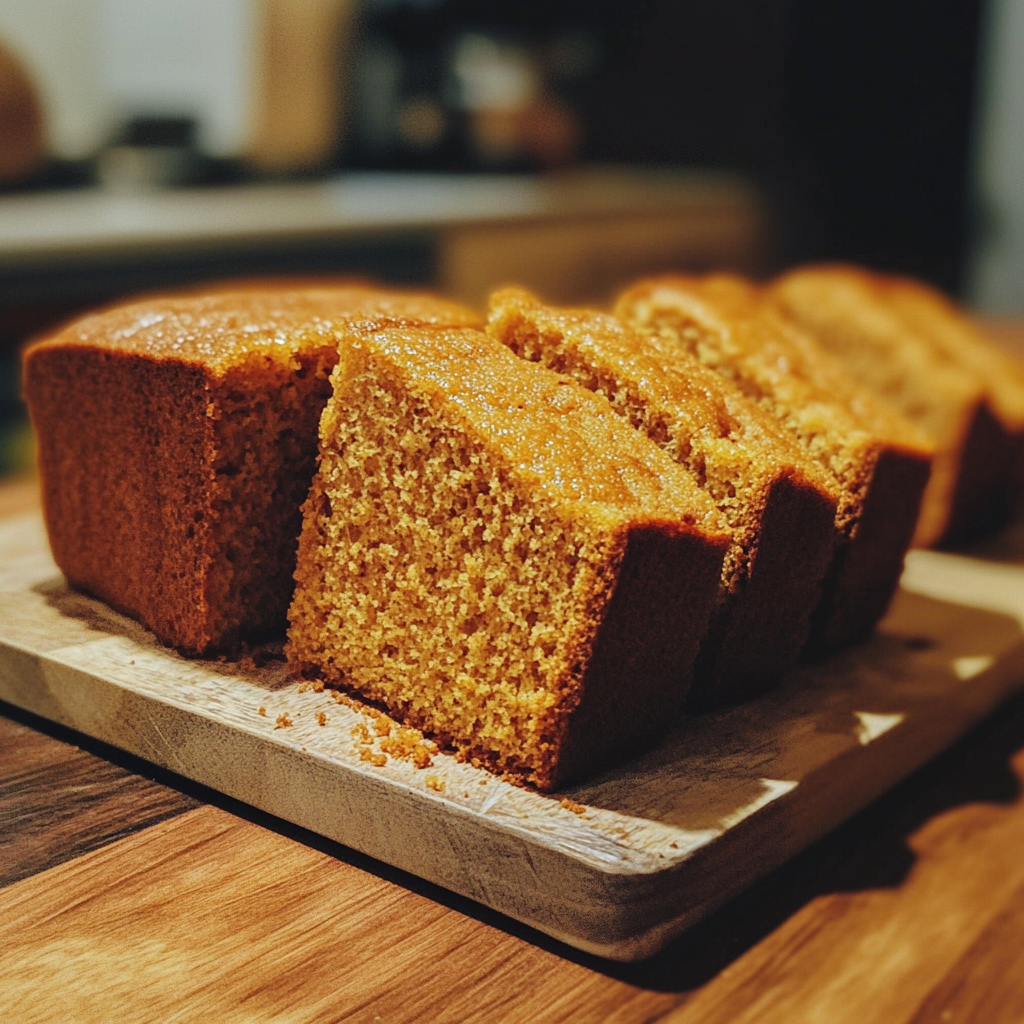
Professional Techniques
One of the first steps in mastering your pumpkin bread recipe is understanding the importance of ingredient quality. Using fresh, pure pumpkin puree (not the canned pie filling) is crucial for achieving that rich, authentic pumpkin flavor. If you’re feeling adventurous, you could even roast your own pumpkin! Just slice a sugar pumpkin in half, scoop out the seeds, and roast it at 350°F (175°C) until it’s soft. Once cooled, scoop out the flesh and blend it until smooth.
Another professional technique is to properly measure your ingredients. For dry ingredients like flour and sugar, spoon them into your measuring cup and level off with a knife instead of scooping directly from the bag, which can compact the flour and lead to a denser loaf. Similarly, when measuring liquids, use a clear liquid measuring cup for accuracy. This small detail can significantly affect the outcome of your pumpkin bread recipe.
When it comes to mixing, avoid overworking the batter. Mix until just combined to ensure a light and fluffy texture. Overmixing can lead to tough bread, which no one wants. For the best results, fold in any add-ins, like nuts or chocolate chips, gently with a spatula.
Troubleshooting Guide
Even the best bakers encounter hiccups along the way. Let’s talk about some common problems and how to troubleshoot them. If your pumpkin bread is too dry, it could be due to overbaking or using too much flour. Always check for doneness a few minutes before the recipe indicates, as every oven is different.
If your bread sinks in the middle, it could be a sign of underbaking or a sudden temperature change. Make sure to preheat your oven properly and avoid opening the door too frequently while baking. You want to keep that heat locked in!
For those who experience a domed top, this could be a result of an overly hot oven. Baking at a slightly lower temperature can help create a more even rise. And remember, if you ever find yourself with an unsightly loaf, you can always turn it into delicious pumpkin bread pudding or French toast!
Presentation Tips
Once your pumpkin bread recipe comes out of the oven, it’s time to think about presentation. A simple glaze made from powdered sugar and a splash of milk or orange juice can add a lovely sheen and sweetness to your bread. Drizzle it on top and allow it to set before slicing.
For a rustic touch, consider serving your pumpkin bread on a wooden cutting board, garnished with a sprinkle of cinnamon or a few pecans. This not only highlights the homemade aspect but also creates a cozy, inviting atmosphere for your guests.
Pairing your pumpkin bread with beverages can also enhance the experience. A warm spiced chai or a creamy latte complements the flavors beautifully. If you’re looking for something a bit stronger, a glass of dessert wine, like a late harvest Riesling, pairs wonderfully with the sweetness of the pumpkin.
Finally, consider how you’ll store your pumpkin bread. It can be kept at room temperature for a few days, wrapped tightly in plastic wrap, or frozen for longer storage. Just make sure to slice it before freezing, so you can take out individual pieces as you desire. This makes it a perfect make-ahead treat for those busy autumn days!
Creative Variations and Adaptations of pumpkin bread recipe
While the classic pumpkin bread recipe is a beloved favorite, it’s also a canvas for creativity. If you’re looking to spice things up, there are countless variations and adaptations to explore that can cater to different tastes, dietary preferences, and seasonal ingredients.
Seasonal Variations
As the seasons change, so can your pumpkin bread! Adding cranberries or walnuts during the fall can bring a delightful twist to the traditional recipe. In the winter, why not incorporate peppermint extract or make a chocolate chip pumpkin bread to celebrate the holiday season? You can even try adding spices like cardamom or nutmeg for a warm, inviting flavor profile.
In spring, consider lightening things up by adding fresh citrus zest or even a swirl of cream cheese for a bright, creamy contrast. Summer can inspire you to incorporate fresh berries or peaches, creating a refreshing take on the classic loaf. The possibilities are endless!
Dietary Adaptations
In our contemporary kitchens, dietary needs and preferences often come into play. If you’re looking for a gluten-free pumpkin bread recipe, simply swap out regular flour for a gluten-free blend. Many blends work well, but be sure to check for xanthan gum in the mix to help with the texture.
For a vegan version, replace the eggs with a flaxseed meal (1 tablespoon of flaxseed mixed with 2.5 tablespoons of water equals one egg). You can also substitute the butter with coconut oil or applesauce for moisture. This way, you can enjoy a delightful treat that everyone can savor, regardless of dietary restrictions.
Creative Twists
Once you’re comfortable with the basics of your pumpkin bread recipe, it’s time to experiment with some creative twists. Think about incorporating unexpected flavors, such as chai spices or even a dash of bourbon for a grown-up version. You might also consider stuffing your pumpkin bread with a cream cheese filling, or swirling in some Nutella for a decadent surprise.
If you have leftovers, don’t let them go to waste! Transform stale pumpkin bread into a delicious bread pudding by cubing it, soaking it in an egg custard, and baking it with a sprinkle of cinnamon and sugar on top. Serve it warm with a scoop of vanilla ice cream for a comforting dessert.
Different cooking methods can also change the game. Try making your pumpkin bread in a slow cooker for a moist, cake-like texture. Alternatively, you can bake pumpkin bread in muffin tins for quick, portable snacks. These mini loaves are perfect for lunchboxes or as a grab-and-go breakfast option.
In conclusion, the beauty of a pumpkin bread recipe lies in its versatility. With a few tweaks and creative additions, you can make it your own while still holding onto those comforting, familiar flavors. So, don your apron, preheat that oven, and let your imagination run wild in the kitchen!
Storage, Reheating, and Meal Prep for pumpkin bread recipe
When it comes to baking a delicious pumpkin bread recipe, one of the most common questions that arise is how to properly store it. Whether you’re preparing for a cozy gathering or just want to enjoy a slice of autumn year-round, knowing how to store your pumpkin bread can make all the difference in maintaining its flavor and texture. Let’s dive into the detailed storage instructions, reheating methods, and meal prep strategies that will help you savor every bite of your pumpkin bread.
Short-term Storage
After you’ve baked your pumpkin bread recipe, it’s essential to allow it to cool completely. This step is crucial because if you store it while still warm, condensation can form inside the container, leading to sogginess. Once cooled, you can store your pumpkin bread at room temperature for up to three days. The key to short-term storage is using an airtight container or wrapping it tightly in plastic wrap. This will help prevent the bread from drying out and keep it fresh.
If you find that your pumpkin bread recipe yields more than you can consume in a few days, consider portioning it out. For example, you could slice the bread and place parchment paper between each slice, making it easier to grab a piece whenever you want a snack. This method not only preserves the bread’s quality but also enhances convenience. Additionally, if you’d like to keep your pumpkin bread on the counter, placing it inside a bread box can help maintain optimal humidity levels without trapping moisture.
Freezing and Long-term Storage
For longer storage, freezing your pumpkin bread is an excellent option. If you’ve baked a large batch or simply want to save some for later, follow these guidelines to ensure its taste and texture remain intact. First, wrap your cooled pumpkin bread tightly in plastic wrap, followed by a layer of aluminum foil. This double protection helps avoid freezer burn, which can negatively impact flavor. You can also use a freezer-safe bag, making sure to remove as much air as possible before sealing.
When freezing your pumpkin bread, it’s wise to label the package with the date and contents. This way, you can keep track of how long it has been stored. Generally, pumpkin bread can be frozen for up to three months, but for the best quality, aim to consume it within one month. If you want to freeze individual slices, follow the same wrapping procedure but place each slice in its own section to make for easy access later.
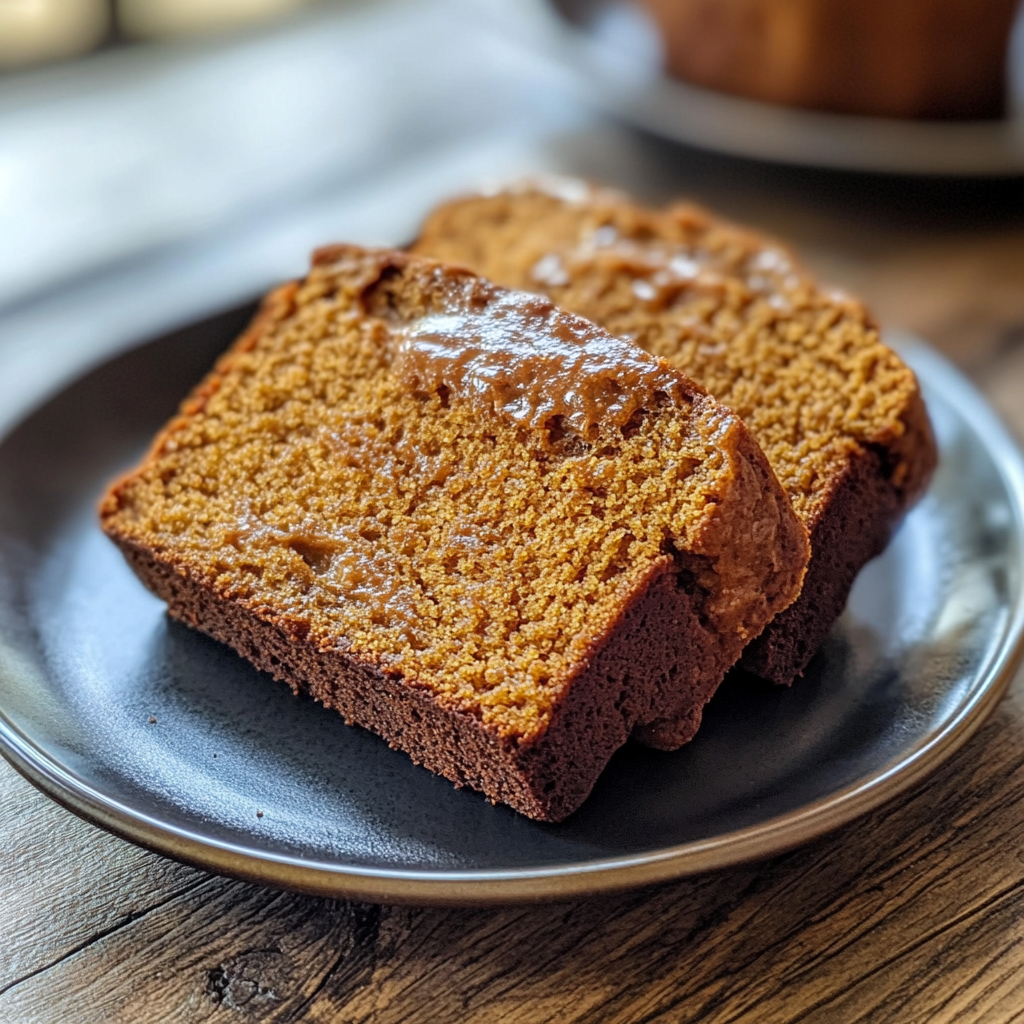
Reheating Best Practices
When you’re ready to enjoy your frozen or refrigerated pumpkin bread, reheating it correctly is essential to bringing back its delightful taste and texture. If you’ve stored your pumpkin bread in the refrigerator, you can simply take a slice and reheat it in a toaster or microwave. For the microwave, heat for about 10–15 seconds; this should be enough to warm it without making it too dry. If you prefer a crispy crust, try using an oven. Preheat it to 350°F (175°C), wrap the bread in foil to prevent it from drying out, and heat for about 10–15 minutes.
For frozen pumpkin bread, it’s recommended to let it thaw in the refrigerator overnight before reheating. However, if you’re short on time, you can also reheat it directly from the freezer. Just remember that it will take a bit longer to warm through. Use the same oven or microwave methods mentioned above, but expect the reheating time to be extended by a few minutes.
Meal prep can be an exciting way to enjoy your pumpkin bread recipe throughout the week. By baking a loaf over the weekend, you can enjoy slices for breakfast, snacks, or even dessert during the workweek. Just remember to slice and store it properly as discussed. This way, your homemade pumpkin bread can become a staple in your meal planning.
Food safety is another important aspect to consider when storing your pumpkin bread. Always ensure your hands and utensils are clean while handling the bread. If you notice any signs of mold or an off smell, it’s best to discard the bread rather than risk consuming it. Following these storage guidelines will keep your pumpkin bread fresh and delicious.
In summary, whether you’re enjoying the warmth of freshly baked pumpkin bread or savoring it weeks later, understanding how to store, freeze, and reheat your pumpkin bread recipe is key to maximizing its lifespan and flavor. With a few simple techniques, you can ensure that every bite remains as delightful as the first.
Nutritional Benefits and Health Information
Navigating the world of nutrition can be overwhelming, especially when it comes to delicious baked goods like a pumpkin bread recipe. However, this delightful treat can be a wholesome addition to your diet when made with the right ingredients. Let’s explore the nutritional benefits and health information surrounding this beloved recipe, as well as how to make it even more nutritious.
Nutritional Profile
A typical serving of pumpkin bread contains a variety of ingredients, each contributing to its overall nutritional value. A standard slice (about 1 oz or 28 grams) of homemade pumpkin bread can contain approximately 120–150 calories. The macronutrient distribution generally includes around 3–5 grams of protein, 2–5 grams of fat, and 20–25 grams of carbohydrates. The carbohydrate content is largely derived from the flour and sugar, while the pumpkin puree adds fiber and essential nutrients.
One of the standout features of a pumpkin bread recipe is its inclusion of pumpkin puree. This ingredient is a powerhouse of vitamins and minerals. For instance, a single cup of pumpkin puree contains over 200% of the daily recommended intake of vitamin A, which is crucial for eye health, immune function, and skin maintenance. Additionally, pumpkin is rich in potassium, which helps regulate blood pressure and supports heart health.
Health Benefits
The health benefits of the ingredients in your pumpkin bread recipe extend beyond just vitamins and minerals. The addition of spices like cinnamon and nutmeg not only enhances the flavor but also packs an antioxidant punch. Cinnamon has been shown to have anti-inflammatory properties and may help lower blood sugar levels. Nutmeg, on the other hand, is known for its digestive benefits and can help alleviate indigestion.
Moreover, using whole wheat flour instead of all-purpose flour can significantly increase the fiber content of your pumpkin bread, making it a more filling and nutritious option. Fiber is essential for digestive health and can help regulate blood sugar levels, making it a good choice for those monitoring their carbohydrate intake. Additionally, swapping refined sugars for natural sweeteners like honey or maple syrup can provide a more balanced sweetness along with added nutrients.
Dietary Considerations
When considering dietary restrictions, pumpkin bread can be easily modified to fit various needs. For those who follow a gluten-free diet, using gluten-free flour blends can yield excellent results without compromising texture. If you’re looking to reduce sugar intake, using mashed bananas or unsweetened applesauce can replace sugars while adding natural sweetness and moisture.
Allergen considerations are also important. If you are baking for someone with nut allergies, be mindful of any nut-based flours or toppings. Likewise, vegan alternatives can be incorporated into your pumpkin bread recipe. Replacing eggs with flaxseed meal or chia seeds mixed with water can help bind the ingredients while keeping the recipe entirely plant-based.
In terms of how pumpkin bread fits into different diet plans, it can work well in moderate portions for those on a balanced diet, while also being nourishing enough for those following a more health-conscious regimen, such as a Mediterranean or plant-based diet. The combination of ingredients delivers not only satisfaction but also sustenance, making it an ideal snack or breakfast option.
When comparing pumpkin bread to other similar baked goods, it often stands out as a healthier choice. Many store-bought loaves are laden with preservatives and excess sugar, while homemade pumpkin bread allows you to control the ingredients and make healthier substitutions. This means that you can indulge in a wholesome treat that aligns with your goals without sacrificing flavor.
In conclusion, the nutritional benefits of a pumpkin bread recipe are significant, especially when prepared with wholesome ingredients. By considering the health aspects and making thoughtful modifications, you can enjoy this delicious bread guilt-free. With its delightful flavors and numerous health benefits, pumpkin bread is more than just a seasonal treat; it can be a nourishing part of your everyday diet.
Frequently Asked Questions About Pumpkin Bread Recipe
Pumpkin bread recipe moist
To achieve a moist pumpkin bread, it is critical to incorporate enough wet ingredients, such as pumpkin puree, which not only enhances flavor but also adds moisture. You can also include yogurt or sour cream to your recipe, as their acidity helps tenderize the bread while adding richness. Be cautious not to overmix your batter; mixing just until combined ensures a tender crumb. Additionally, consider using a combination of oil and butter for richness while maintaining moisture. Lastly, avoid overbaking, as this can lead to dryness; check for doneness a few minutes before the suggested baking time.
Old fashioned pumpkin bread recipe
An old-fashioned pumpkin bread recipe typically emphasizes simple ingredients and traditional methods, often using pantry staples like flour, sugar, eggs, and pumpkin puree. To give it that classic touch, you might want to use a blend of warm spices such as cinnamon, nutmeg, and cloves, which evoke nostalgia and warmth. Some old-fashioned recipes also call for nuts or raisins for added texture and flavor. For an authentic taste, consider using fresh pumpkin instead of canned puree, roasting and mashing it yourself for a richer flavor. Finally, ensure to mix the batter by hand to maintain a rustic texture, as is characteristic of traditional recipes.
Pumpkin bread recipe easy
For an easy pumpkin bread recipe, focus on using straightforward ingredients and minimal steps to simplify the process. Start with canned pumpkin puree, as it eliminates the need to cook and mash fresh pumpkin, saving time. Use a one-bowl method where you combine all wet ingredients first, followed by the dry ingredients to reduce cleanup and complexity. Opt for measuring cups and spoons rather than kitchen scales, making it accessible for even novice bakers. Lastly, consider using a preheated oven and a standard loaf pan for consistent baking results, allowing you to enjoy delicious pumpkin bread with minimal effort.
Best pumpkin bread recipe
The best pumpkin bread recipe is often subjective, but one that balances flavor, texture, and moisture can stand out among the rest. Look for a recipe that combines fresh pumpkin puree with a mix of spices like cinnamon, ginger, and nutmeg for depth of flavor. Incorporating both brown and granulated sugar can provide a delightful caramel-like sweetness. For added richness, consider using a combination of melted butter and vegetable oil, which also helps maintain moisture. Finally, add in nuts or chocolate chips for an extra layer of flavor and texture, and don’t forget to use a toothpick to check for doneness before pulling it out of the oven.

